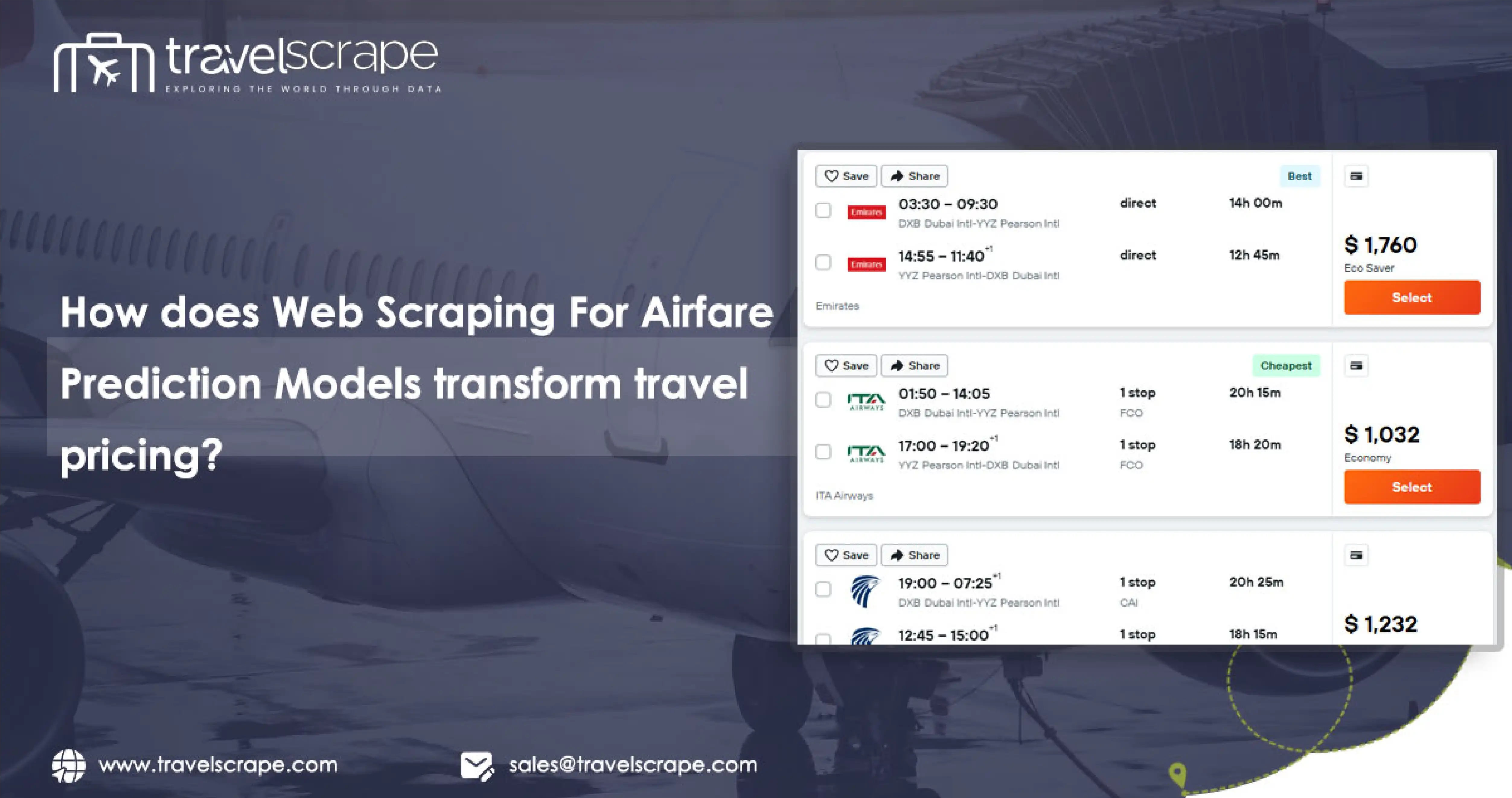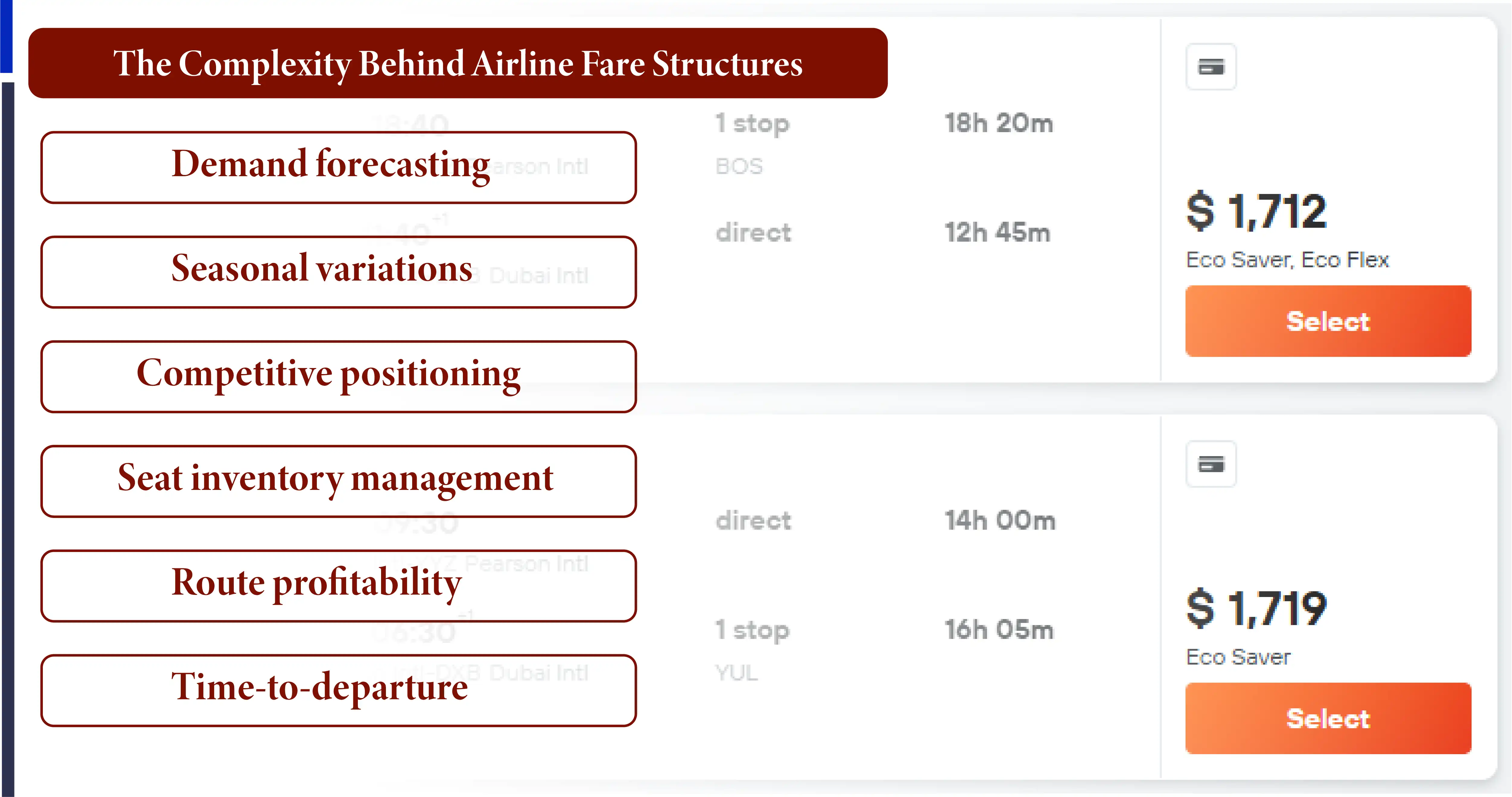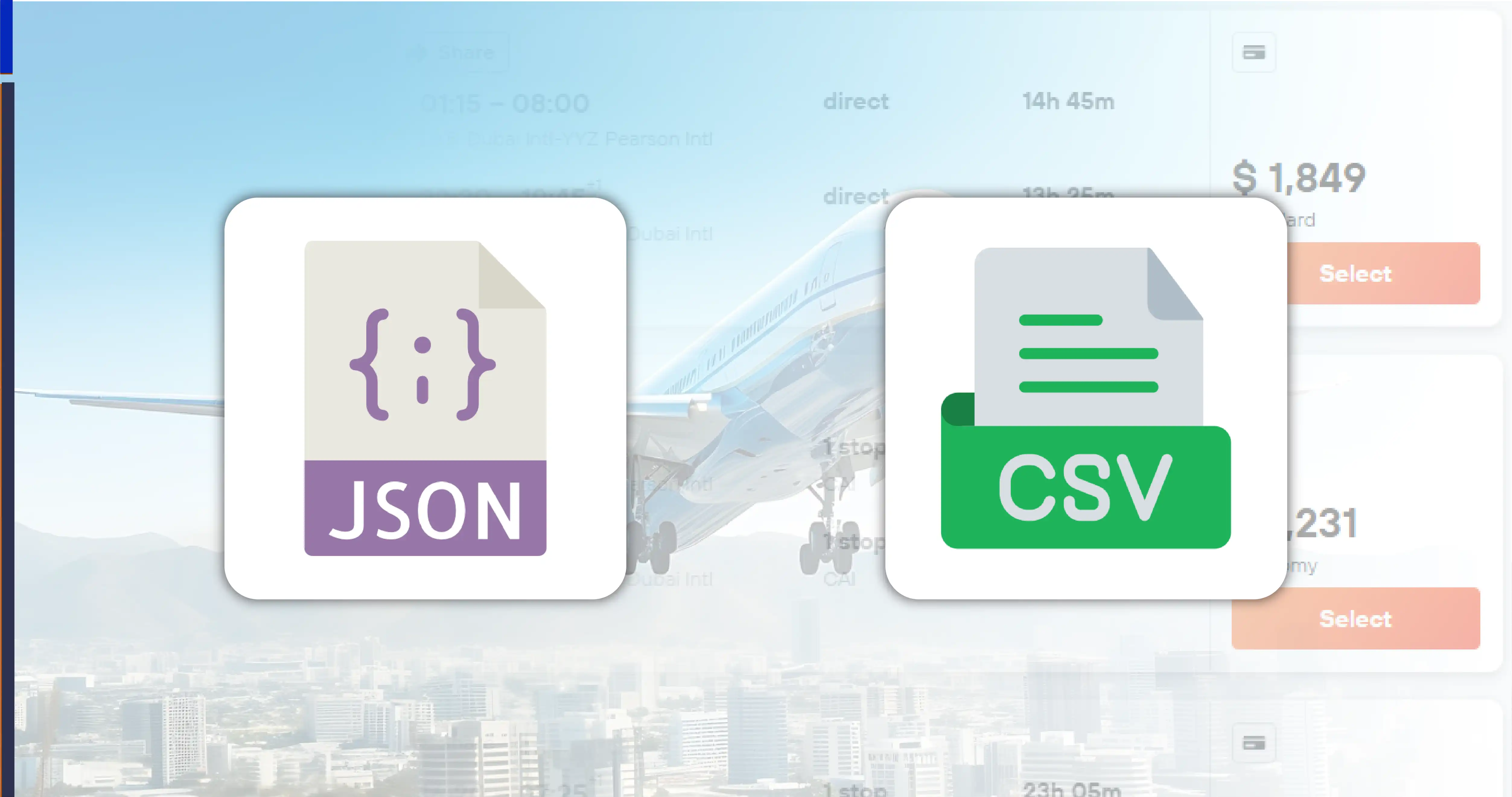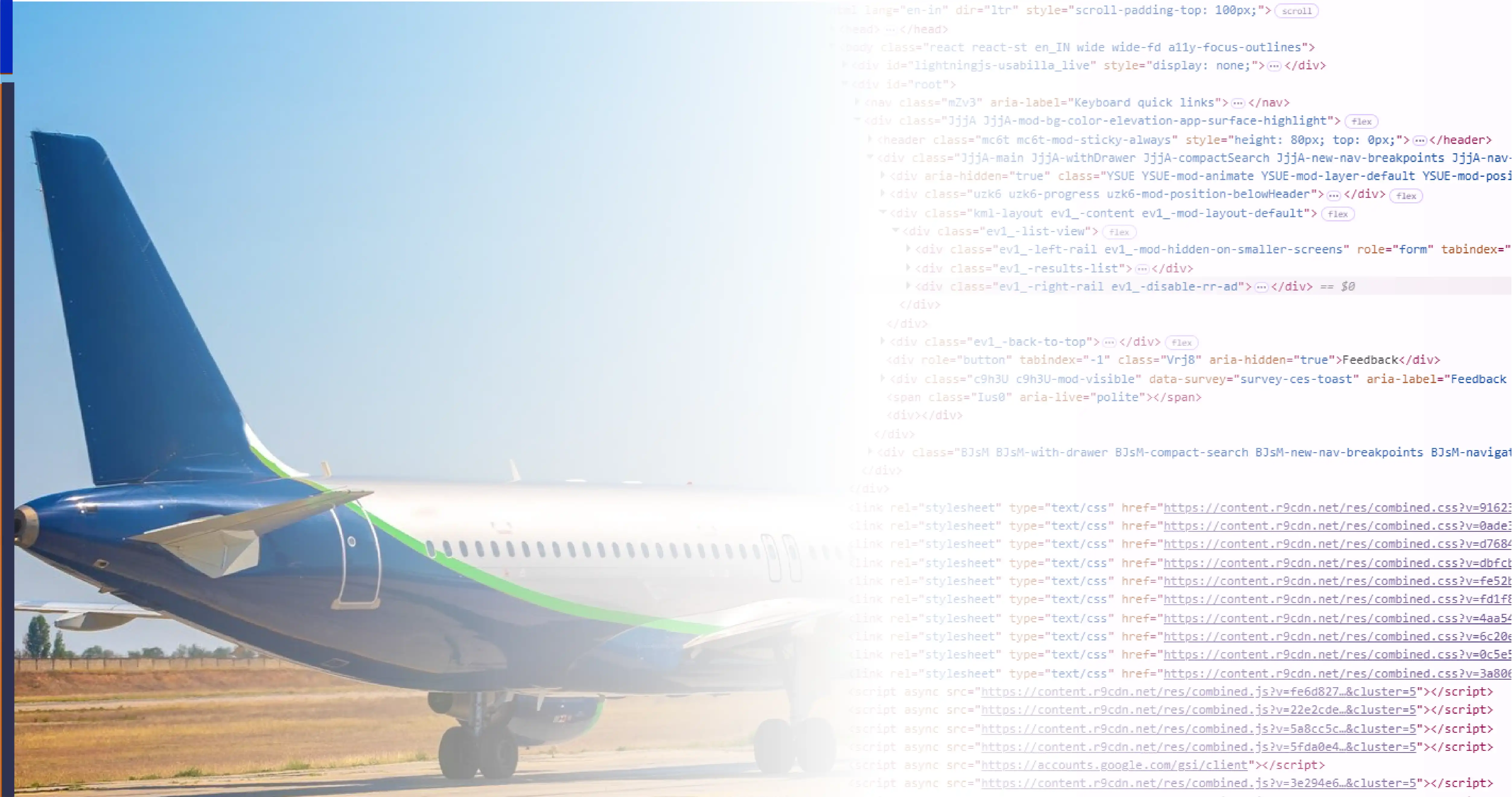How does Web Scraping For Airfare Prediction Models transform travel pricing?

Introduction
In the modern digital landscape, the travel industry has seen a significant shift in how airfares are analyzed, predicted, and structured. Web Scraping For Airfare Prediction Models is at the core of this evolution—a cutting-edge technology that has redefined how travelers, businesses, and airlines engage with pricing data. By enabling advanced data collection and analysis, this approach transforms travel economics, enhances transparency, and provides a competitive edge to those who leverage its capabilities.
Understanding the Airfare Pricing Ecosystem
The airline industry relies on one of the most intricate pricing models in the global marketplace. Unlike fixed-price products, flight tickets are highly dynamic, fluctuating due to multiple factors, including:
| Pricing Factor | Impact on Airfares |
|---|---|
| Seasonal demand | High season can increase prices by 30-200% |
| Day of week/time of day | Midweek flights typically 15-25% cheaper than weekends |
| Booking window | Prices often rise 21, 14, and 7 days before departure |
| Competitor actions | Direct route competition can lower prices by 20-30% |
| Fuel costs | Represents 15-30% of operating costs, directly impacts pricing |
| Remaining inventory | Last 10-20% of seats typically priced at premium rates |
| Special events | Local events can drive prices up by 40-100% |
With such a complex interplay of variables, accurately predicting airfare trends is challenging and highly valuable. Traditional methods—such as manual tracking or basic price alerts—often fail to identify the sophisticated patterns behind price shifts.
This is where Web Scraping For Airfare Prediction Models becomes a game- changer, enabling data-driven insights for more precise pricing forecasts.
The Complexity Behind Airline Fare Structures

Airline pricing is among the most intricate examples of dynamic pricing across industries. Unlike products with fixed costs and standardized pricing models, airfare structures involve numerous variables that constantly shift based on demand, competition, and timing. A flight can have multiple fare classes, each with pricing rules, restrictions, and availability criteria.
Several critical factors influence how airlines determine and adjust their fares:
- Demand forecasting: Airlines analyze booking trends and historical data to anticipate passenger demand.
- Seasonal variations: Prices fluctuate during peak travel seasons, holidays, and special events.
- Competitive positioning: Airlines monitor and respond to competitors' pricing strategies in real-time.
- Seat inventory management: As flight occupancy increases, ticket prices typically rise.
- Route profitability: Less popular routes often experience more significant price fluctuations.
- Time-to-departure: Fares tend to escalate as the departure date nears.
Given the complexity of these pricing mechanisms, gaining insights into airfare trends requires robust data analysis. Data Scraping For Airline Pricing enables businesses, analysts, and travel platforms to decode these intricate pricing patterns, offering the transparency needed to make informed decisions.
The Technical Foundation of Airfare Data Collection

Web scraping is the process of automating data extraction from online sources. In the airline industry, specialized algorithms and tools systematically collect real-time pricing data from airline websites, online travel agencies (OTAs), and fare aggregator platforms. This data is crucial for price comparison, market analysis, and competitive intelligence.
Technical Workflow of Flight Price Data Scraping
The process of airfare data extraction follows a structured approach to ensure accurate and efficient data retrieval:
Target identification → Mapping relevant data sources.
Request generation → Creating properly formatted queries.
Content retrieval → Downloading raw page content.
Data extraction → Parsing HTML/JavaScript for relevant elements.
Structuring → Converting to standardized formats (JSON, CSV).
Storage → Loading into databases for analysis.
Flight Price Data Scraping presents unique technical challenges, including dynamic content loading, stringent anti-scraping measures, and geographic price variations. To counter these, advanced Travel Scraping API solutions utilize sophisticated techniques such as browser emulation and request rotation, ensuring data is collected efficiently while mimicking real-user behavior.
The Science Behind Airfare Prediction Models
Airfare prediction models leverage advanced algorithms and historical data analysis to forecast future flight prices, helping travelers and businesses make informed booking decisions.
Machine Learning Approaches
Airfare prediction has evolved significantly by integrating machine learning approaches in today’s travel industry. By leveraging complex algorithms, these models process vast amounts of historical pricing data to detect hidden patterns and correlations. Unlike traditional analytical methods, machine learning can dynamically adapt to changing market conditions, making airfare forecasts more precise and data-driven.
Comparison of Prediction Methodologies
Different machine learning models are employed in airfare prediction, each with its strengths and limitations.
| Model Type | Strengths | Limitations | Typical Accuracy |
|---|---|---|---|
| Linear Regression | Simple, interpretable | Misses non-linear patterns | 65-75% |
| Time Series (ARIMA) | Captures seasonal patterns | Requires stationary data | 70-80% |
| Random Forests | Handles mixed data types | Computationally intensive | 75-85% |
| Neural Networks | Recognizes complex patterns | Requires large training sets | 80-90% |
| Ensemble Methods | Combines multiple models | Complex implementation | 85-92% |
Airfare Price Prediction With Data Extraction combines these technical approaches with domain expertise to create systems that can forecast price movements with increasing accuracy. As models ingest more data, their predictive power improves through continuous learning and refinement.
The Technology Behind Airfare Data Extraction

Airfare data extraction involves web scraping, API integrations, and data processing techniques to systematically collect, refine, and analyze flight pricing information from various online sources.
Web Scraping Methodologies for Airline Data
Accurate airfare predictions and market insights rely on robust data collection methods. Web scraping technologies facilitate systematic extraction of flight price data from multiple sources, including:
- Official airline websites – Direct carrier pricing and promotions.
- Online travel agencies (OTAs) – Aggregated fare offerings and booking trends.
- Fare aggregators & metasearch engines – Comparative pricing across airlines.
- Global distribution systems – Centralized inventory from multiple carriers.
Adequate Flight Price Data Scraping implementations typically employ several specialized techniques:
- Headless browser automation: Tools like Selenium and Puppeteer mimic human interactions, allowing navigation through dynamic search results and retrieving structured fare data.
- API integration: Direct access to structured airline and OTA databases for seamless data retrieval.
- HTML parsing: Using libraries like BeautifulSoup or Cheerio to extract relevant data from website structures.
- Proxy rotation: Avoid IP bans and rate limits by distributing requests across multiple proxies.
- CAPTCHA handling: Implementing AI-based solvers or human-in-the-loop systems to bypass anti-bot mechanisms.
The increasing complexity of these scraping techniques underscores the need for specialized Airline Data Scraping Services to ensure accuracy, compliance, and efficiency in extracting airfare intelligence.
Data Processing Pipeline
Raw scraped data undergoes a multi-step processing pipeline before it becomes actionable for pricing analysis and predictive modeling:
- Data Cleaning: Eliminating duplicates, correcting errors, and standardizing fare formats.
- Data Enrichment: Integrating contextual factors such as holidays, peak seasons, and weather conditions to refine insights.
- Feature Engineering: Creating additional variables (e.g., price fluctuations and demand trends) to enhance predictive models.
- Data Storage: Organizing extracted information in optimized databases for seamless retrieval and analysis.
- Real-Time Processing: Enabling continuous updates to ensure the latest pricing insights are instantly available for decision-making.
This sophisticated pipeline transforms raw pricing information into structured datasets, which machine learning algorithms can use to generate valuable Flight Price Data Intelligence .
Technical Challenges and Solutions
A structured approach to identifying and resolving obstacles in data scraping and processing to ensure accuracy, reliability, and efficiency.
Overcoming Anti-Scraping Measures
As Web Scraping For Airfare Prediction Models becomes more prevalent, travel websites have strengthened their defenses with sophisticated anti-scraping mechanisms. These include:
- CAPTCHA and reCAPTCHA challenges: Requiring human verification to distinguish between bots and real users.
- IP blocking and rate limiting: Detecting and restricting requests from suspicious or high-frequency sources.
- Browser fingerprinting: Identifying and blocking automated tools based on unique browser characteristics.
- Dynamic content loading: Displaying pricing data using JavaScript instead of static HTML, making direct extraction more complex.
- Frequent layout changes: Regularly modifying website structures to disrupt scraping scripts.
To overcome these barriers, modern Travel Scraping API solutions leverage advanced techniques such as:
- Sophisticated browser emulation: Mimicking human-like interactions to avoid detection.
- Distributed scraping infrastructures: Using multiple proxies and IP rotations to evade blocks.
- CAPTCHA solving services: Automating CAPTCHA resolution through AI-powered techniques.
- Machine learning-based content extraction: Adapting to website layout changes in real-time.
- Legitimate API access: Utilizing official APIs when available to ensure reliable data extraction.
By employing these solutions, businesses can maintain uninterrupted access to critical travel data despite evolving security measures.
Data Quality and Consistency Issues
Ensuring accurate and consistent data across multiple sources is another major challenge in airfare prediction.
Common issues include:
- Format inconsistencies: Different travel platforms present pricing details in varied structures.
- Incomplete data: Missing or partial information that can impact model accuracy.
- Temporal alignment: Ensuring data collected at different times remains comparable.
- Currency and unit normalization: Standardizing monetary values and measurement units for uniformity.
- Fare class mapping: Harmonizing different fare naming conventions across providers.
Advanced Custom Travel Data Solutions implement robust data processing pipelines that address these issues through:
- Standardized extraction templates to ensure uniform data collection.
- Automated validation rules to detect and correct discrepancies.
- Reference data comparison for improved accuracy.
- Anomaly detection algorithms to identify outliers and inconsistencies.
- Continuous monitoring and quality assurance processes to maintain data integrity over time.
By implementing these measures, businesses can enhance the reliability of their airfare prediction models and drive better insights.
The Impact of New Distribution Capability (NDC)
-01.webp)
The New Distribution Capability (NDC) transforms how flight data is distributed and accessed across the airline industry. This advanced standard enables richer content and more direct connectivity between airlines and distribution partners, significantly influencing Scrape Dynamic Pricing In Airlines .
Key impacts of NDC on data accessibility and pricing insights include:
- More structured data access: The introduction of standardized APIs minimizes reliance on traditional web scraping methods, streamlining data extraction.
- Richer ancillary service data: Airlines can now provide deeper insights into complete offer pricing, extending beyond just base fares to include additional services.
- Personalized offer detection: Enhanced visibility allows businesses to identify targeted pricing strategies and track customer-specific deals.
- Enhanced attribute transparency: Improved data granularity offers a clearer view of price variations and the factors influencing pricing structures.
Leading Flight Price Data Scraping solutions are evolving to integrate these new standards while ensuring seamless compatibility with NDC-based and traditional data sources.
How Travel Scrape Can Help You?
We specialize in Web Scraping For Airfare Prediction Models , turning vast raw travel data into actionable business intelligence.
Our end-to-end solutions empower businesses with:
- Custom Data Collection: We build tailored scraping solutions that align with your specific data sources and business objectives.
- Advanced Prediction Modeling: Our cutting-edge algorithms analyze historical pricing trends to generate highly accurate airfare forecasts.
- Seamless Integration Options: Get real-time predictive insights delivered via APIs and database connectivity, ensuring a smooth integration with your existing workflows.
- Scalable Processing Capacity: Whether you're conducting a targeted route analysis or monitoring global airfare trends, our robust infrastructure scales effortlessly to match your growing needs.
- Regulatory Compliance Guidance: Navigate the complex legal landscape of Travel Industry Web Scraping with our expert compliance support.
Our Custom Travel Data Solutions have helped travel agencies reduce costs by up to 15%, enabled OTAs to improve conversion rates by offering optimal booking timing advice, and assisted airlines in refining their competitive positioning through enhanced market visibility.
Our team blends technical excellence in data extraction with deep domain expertise in the airline industry. This ensures that our Travel Scraping API delivers raw data and contextually relevant insights that drive real business impact.
Conclusion
For Travel aggregators and businesses aiming to Scrape Mobile Travel App Data , monitoring hotel reviews is a crucial step toward delivering exceptional customer experiences.
Contact Travel Scrape today for cutting-edge web scraping solutions tailored to your needs. Let us empower your travel business with actionable insights!